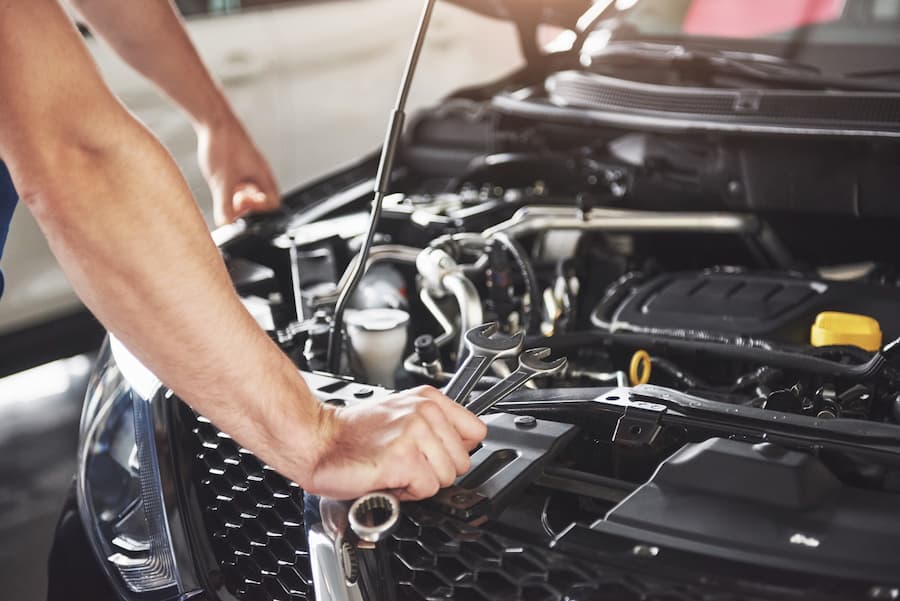Introduction
Car Engine – Better maintenance, troubleshooting, and performance optimization all depend on an awareness of the main parts and functions of an engine. Knowing these parts and their interactions helps one to have an important understanding of how a car runs.
The Parts and Functions of a Car Engine
Engine Block
The engine block is considered the “heart” of the engine, which holds the cylinders, pistons, crankshaft, and other vital engine car parts. Usually constructed of cast iron or aluminum, it offers a strong structure to resist the great pressures produced inside. The block’s central component, the cylinders house the ignition of the fuel and air combination, hence starting the power generating process.
Cylinders
Within the engine block, cylinders—metal tubes—allow the combustion of air and fuel. Designed in either inline, V, or flat depending on the number of cylinders and engine type, they are essential for the power output of the engine. A piston found in every cylinder glides up and down when the fuel mixture ignites.
Pistons
Pistons are cylindrical parts moving within the cylinders. They translate the combustion process’s energy into mechanical force. The resultant explosion drives the piston down when the air-fuel combination ignites, therefore supplying energy to the crankshaft. Usually composed of aluminum alloys, pistons minimize weight and provide endurance under high heat and pressure.
Crankshaft
The primary rotating part of the engine, the crankshaft transforms the pistons’ up- and down motion into rotational energy capable of driving the wheels of the car. Linked to every piston by a connecting rod, it spans the engine block. The smooth running of the engine depends critically on the crankshaft, which also guarantees constant delivery of power.
Cylinder Head
Rising on top of the engine block, the cylinder head seals the cylinders and creates a chamber allowing the combustion to occur. It features the camshaft, spark plugs, and valves—sometimes in conjunction. The head holds the channels for the intake and exhaust gasses and guarantees correct compression of the air-fuel combination.
Connecting Rod
The connecting rod pivots to convey each piston’s action to the crankshaft as the piston goes up and down. Given that the connecting rod must manage the great pressure and stress of the combustion cycle, its strength and accuracy are very vital.
Spark Plug
In fuel engines, the spark plug is necessary to ignite the cylinder’s air-fuel combination. It drives the piston down by delivering an electric spark precisely at the moment to start combustion. Smooth and effective engine operation depends critically on the timing and intensity of the spark.
Fuel Injectors
Delivering the exact amount of fuel into the engine’s combustion chamber falls to fuel injectors. They offer more efficient, under control fuel delivery and replaced more archaic carburetor systems. Modern engines maximize fuel efficiency and performance by means of electronic fuel injection systems, under supervision of the computer of the car.
Spark Plug
Igniting the air-fuel combination inside the cylinder in fuel engines depends on the spark plug. It drives the piston down by delivering an electric spark precisely at the moment to start combustion. Smooth and effective engine operation depends critically on the timing and intensity of the spark.
Oil System
The moving engine elements of the system lubricate them, therefore lowering friction and wear. Important parts include the oil pan, filter, and pump. Through the engine, the oil pump moves oil to guarantee smooth operation of bearings, pistons, and other components. While the oil pan holds the oil when the engine is not operating, the oil filter eliminates pollutants.
Exhaust System
The engine has to release the exhaust gasses following combustion. Composing the exhaust manifold, catalytic converter, and muffler, the exhaust system is Gasses from the cylinders are gathered by the exhaust manifold and guided via the catalytic converter, therefore lowering dangerous emissions. The muffler reduces the exhaust gas noise generation.
Engine Control Unit (ECU)
Modern cars’ brains are their Engine Control Unit (ECU). To maximize performance, it controls factors including fuel injection, ignition timing, and air-fuel ratio while tracking several sensors around the engine. The ECU guarantees the engine produces the required power output, satisfies pollution criteria, and operates effectively.
Conclusion
In conclusion, the several parts of a car engine cooperate to convert fuel into the power required for car operation. From the cylinders’ combustion process to the crankshaft, camshaft, and piston coordination, every element is essential in guaranteeing the engine runs consistently and effectively. With attention to its major components—fuel injectors, cooling system, and ignition system—a well-maintained engine may provide lifetime and best performance. Knowing the inner workings of the engine not only helps with diagnosing but also enables drivers to decide which repairs and maintenance they should do. Visit Blookets for more informative blogs.
Also Read: 5 Reasons Why Expert Car Detailing Is Important for Your Car Life



